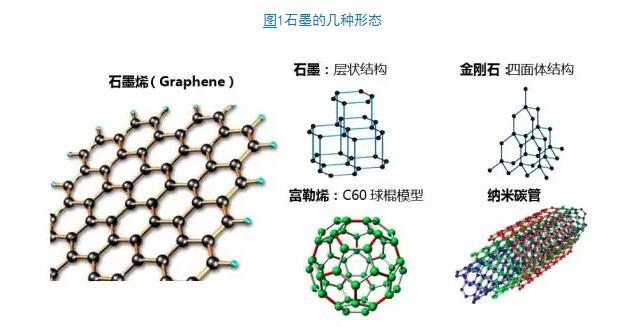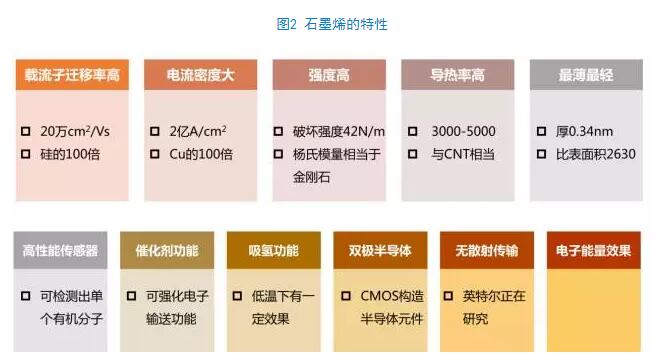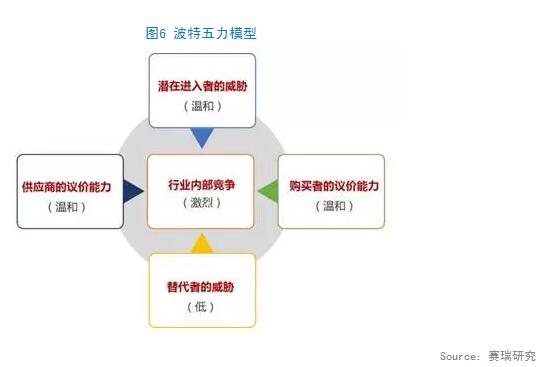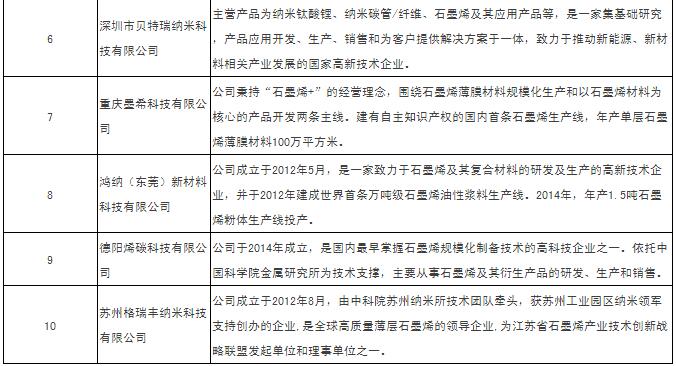Abstract 1. Overview of graphene industry development: Graphene (Graphene) is a new material of single-layer sheet structure composed of carbon atoms. It is a hexagonal honeycomb lattice formed by carbon atoms with sp2 hybrid orbitals. Flat film, only one carbon atom thickness...
1. Overview of graphene industry development: Graphene (Graphene) is a new material of a single-layered sheet-like structure composed of carbon atoms. It is a planar film composed of carbon atoms and sp2 hybrid orbital hexagonal honeycomb crystal lattice. It has only one carbon atom thickness. Two-dimensional materials. Graphene is a basic structure in various forms of carbon, and other forms of carbon are graphite, diamond, carbon nanotubes, and fullerenes. At present, in the energy industry, graphene can be used as a graphene battery, which is highly concerned by the energy storage industry.

Figure 1: Several forms of graphite
The superb physical properties of graphene include:



The global graphene market can be divided into two broad categories: graphene oxide (GO), graphene nanosheets (GNP) and others. Other types of graphene include silicon carbide graphene, reduced graphene oxide (rGO), etc., each of which has different characteristics and uses. Among them, graphene oxide has the highest share in the global market, followed by graphene nanosheets.

Compared with other graphene types, graphene oxide has the fastest growth in the global graphene market due to its low production price. As the demand for environmentally friendly, stable, non-toxic and flexible carbon materials grows, graphene manufacturers are also investing in research and development to produce graphene that meets demand.
In 2014 and 2015, the global graphene market was estimated to be 2.9 million US dollars and 3.36 million US dollars respectively. Graphene is on the eve of large-scale industrialization, and the market size is expected to reach 385 million US dollars by 2020. Graphene will make practical breakthroughs in heat dissipating materials, high performance computing systems (transistor materials), transparent display materials, supercapacitors, lithium batteries, sensors, structural materials and other fields. By 2025, the graphene market will reach $2,031 million. At that time, supercapacitors, structural materials, transparent display materials, and high-performance computing materials will release more market space.

The United Kingdom is the birthplace of graphene, but related research and development and industrialization lag behind some Asian countries such as China, South Korea, Japan and Singapore.
In order to change this situation, in recent years, the British government has invested heavily in accelerating the development of graphene. In 2011, the UK government announced an investment of £50 million (£1 to $1.52) to support graphene research, including the establishment of the National Graphene Research Institute with a total investment of £61 million; in December 2012, the UK government allocated an additional £21.5 million To fund research in the application of graphene materials; in 2013, the UK Government and the European Research and Development Foundation jointly invested £61 million to establish the National Graphene Research Institute at the University of Manchester, led by two Nobel Prize winners. It was completed in early 2015. In 2014, the British government and Masdar announced that they will continue to invest 60 million pounds to establish the Graphene Engineering Innovation Center at the University of Manchester, supplementing the National Graphene Research Institute, accelerating the application research and development of graphene, maintaining the UK in graphene and The world's leading position in other 2D materials. The British Chancellor of the Exchequer Osborne said that the British government will "work to ensure that British discoveries are made famous in the UK."
Not only that, but there are also many companies in the UK that are dedicated to the production and application of graphene. For example, the famous British sporting goods Hyde has launched a tennis racket with graphene, Novak Djokovic, etc. since 2013. Many tennis stars are using this racket.
2 United States
As a technology-strengthening country, the United States has strong research and development capabilities, and its investment in graphene has begun to be relatively early, and its investment is relatively large. The US Department of Defense's Advanced Research Projects Agency released a $22 million carbon-electronic RF application project in July 2008 to develop graphene-based RF circuits for ultra-high-speed and ultra-low-energy applications. Between 2006 and 2011, the National Natural Science Foundation of the United States funded about 200 projects for graphene, covering all areas of graphene research and applications. In 2014, the National Natural Science Foundation invested $18 million and the US Air Force Research Office invested $10 million to conduct basic research on graphene and related two-dimensional materials.
The good entrepreneurial environment in the United States has also prompted the birth of many small graphene enterprises, and the industrialization and application process is relatively fast. The United States has a large number of large and powerful R & D companies, such as International Business Machines Corporation (IBM), Intel, Boeing, etc. invested a lot of research and development of graphene. In 2012, IBM USA successfully developed the first integrated circuit made of graphene wafers, which made the special electrical properties of graphene show the application prospects, indicating that graphene wafers can be used instead of silicon wafers in the future. In October 2014, IBM researchers discovered that graphene materials can significantly reduce the cost of blue LEDs, which have the opportunity to generate high-frequency transistors, photodetectors, biosensors, and other "post-silicon era" components. It plans to invest $3 billion in next-generation chip technology in the next five years.
3 EU
The EU has also invested heavily in the development of graphene in recent years. As of 2011, the EU has invested a total of about 150 million euros to promote the development of graphene. More than 50 companies in the EU are developing R&D, industrialization and application of graphene. In addition to government-sponsored academic research, many industrial giants, such as BASF and Bayer, have invested considerable human and financial resources to strengthen the development of graphene-related applications.
In January 2013, the European Commission listed graphene as one of the “flagship projects for emerging technologies in the futureâ€. It plans to provide 1 billion euros in funding within 10 years to raise graphene research to a strategic level, aiming to bring graphene and other two. Dimensional materials are pushed from the laboratory to the society, promoting industrial revolution and economic growth, and creating employment opportunities. The project is led by the Chalmers University of Technology in Sweden and consists of more than 100 R&D teams in 15 member states of the European Union, including four Nobel Prize winners.
At present, the transition period under the EU's “Seventh Framework Programme (FP7)†(October 1, 2013 to March 31, 2016) has been perfectly closed. The results of these eight studies are: graphene neuron research, graphene pressure sensor, frictionless graphene, graphene kayaking, agitation to produce graphene, graphene flexible display, graphene fiber, graphene rechargeable battery.
As an important member of the European Union, Germany launched the graphene priority research project in 2010, including 38 research projects, with a budget of 10.6 million euros in the first three years; the German Federal Ministry of Education and Research also invested 7 million euros in the year to fund related research. It aims to deepen the understanding and manipulation of graphene performance and lay the foundation for new graphene-based electronic products. In October 2012, scientists at the Technical University of Munich in Germany successfully produced graphene photodetectors. Photodetectors made of graphene can process and direct photoelectric signals very quickly.
4 South Korea
The research and industry of graphene in Korea is developing rapidly, which not only benefits from the uninterrupted support of the Korean government in recent years, but also benefits from the huge investment of large domestic companies. The former Ministry of Knowledge Economy of Korea expects to provide a total of US$250 million in funding to the graphene sector between 2012 and 2018, of which US$124 million will be spent on graphene technology research and US$126 million on graphene commercial application research. In 2013, Korea's Ministry of Industry, Trade and Resources announced the integration of Korean domestic research institutions and corporate strength to promote the commercialization of graphene. 41 research institutes including the Korea Science and Technology Institute will form a graphene alliance with six companies to cooperate in the government. In the next six years, it will invest 42.3 million US dollars, hoping to build a market of 15.3 billion US dollars per year, forming 25 global leaders. South Korea pays attention to the protection and application of graphene patents, and its patents rank third in the world, second only to the United States and China, and far higher than other European countries.
At the industrial enterprise level, South Korea's Samsung has invested a large amount of research and development to ensure its international leading position in the fields of flexible display, touch screen and chip. In 2011, it developed a 40-inch graphene touch screen panel. In 2014, Samsung Advanced Technology Research Institute and South Korea's Sungkyunkwan University jointly announced the synthesis of a graphene crystal that can maintain conductivity at a larger scale. It is a screen that can be used on flexible displays and wearable devices. Display technology. South Korean scientists also announced in November last year that they have invented the latest graphene super mobile phone battery, which can store the same amount of power as a conventional battery, but the charging time is only 16 seconds.
5 Japan
As one of the most developed countries in the carbon materials industry, Japan has funded the development of graphene since 2007. For example, the Japan Science and Technology Promotion Agency funded technology development projects for graphene materials and devices in 2007; the Ministry of Economy, Trade and Industry implemented the “Ultra-light, high-light innovation fusion materials in low-carbon society†project implemented in 2011, with key support. Batch synthesis technology of carbon nanotubes and graphene.
In addition to the relevant investment from the Japanese government, many Japanese companies, such as Hitachi, Sony, and Toshiba, have invested a large amount of capital and manpower in basic research and application development of graphene, and have made remarkable progress. In 2012, Sony Corporation of Japan developed a transparent thin film chemical vapor growth technology that can produce graphene up to 120 meters in length.
3. Market analysis of China's graphene industry 3.1 Overview of industry development
China's research in the field of graphene started relatively late with developed countries. However, in recent years, the number of publications and patents have ranked first in the world, and the graphene research field is at the same stage as developed countries. In May 2015, the National Financial Information Center Index Institute released the world's first graphene index index evaluation results show that China's global graphene industry comprehensive development strength ranked third in the world (the top two are the United States and Japan).
From the macroeconomic policy, the development of graphene in China has been greatly supported by the state and local governments at all levels, and the domestic graphene industry preparation technology and application technology have made great progress. In the middle of the “Twelfth Five-Year Planâ€, the state clearly listed new materials as important strategic emerging industries; the National Natural Science Foundation of China has already allocated more than 300 million yuan to fund graphene-related projects; the state has guided the graphene industry to establish the Chinese graphene industry. The strategic alliance of technological innovation has reached 53 members. The six executive directors of the alliance support and rationally guide the graphene technology route, standard strategy, patent layout, international cooperation and industry promotion.
In view of the broad application prospects of graphene in the future, private capital has been involved in the graphene industry chain. Under the active guidance of industrial parks and venture capital funds, some entrepreneurs set up companies with technology as capital, and some listed companies intervene in the field of graphene with capital as their advantage. Listed companies participate in the development and production of graphene by introducing graphene technology, signing cooperation agreements with scientific research institutions, setting up industrial technology investment funds, or constructing industrial chains from a strategic perspective. At present, some graphene companies have the ability to produce graphene powder, slurry, thermal conductive film, functional coating, conductive ink and touch screen, but there is still huge room for improvement in product quality improvement and downstream market development. Domestic graphene industry A complete and mature industrial chain has not yet been formed.
In general, in 2014, China's graphene market was about $1.5 million. With the solution of graphene mass production and the downstream expansion of graphene, China's graphene industry market reached US$16.3 million in 2015. It is expected to reach US$200 million in 2020 and become the world's largest graphene consumer country.

3.2 Graphene industry five-force model analysis

1 Potential entrant threats
The threat of new entrants refers to the threats that new competitors in the industry pose to existing businesses. The graphene industry is a typical technology-intensive industry. Potential industry entrants will face higher technical barriers to the industry, mainly macro-preparation technical barriers and applied technical barriers.
The graphene preparation technology mainly includes a chemical vapor deposition method, a redox method, a micro mechanical peeling method, and an epitaxial growth method. In the production process, different preparation techniques have different technical disadvantages. For example, the growth of graphene film by CVD method causes pollution and damage in the process of growth and transfer to bring about defects and a decrease in yield. Overcoming the disadvantages of preparation technology and producing large-scale graphene products on a large scale requires a strong research team and long-term accumulation of technology and experience.
From another point of view, high-quality graphene high-quality graphene products require high investment and long time, but some aspects of the application do not require the quality of graphene is very high, which is created for many new companies to enter the market. The conditions. In response to this phenomenon, many companies are investing in efficient and low-cost graphene products while continuing to invest in research and development. In addition, the location and geographic coverage of the plant is also a factor to consider during the installation of the graphene production facility.
Therefore, it is not easy for companies that are new to the industry to deal with all the factors mentioned above. The impact of potential entrants on the graphene market is generally mild.
2 Buyer's bargaining power
The bargaining power of the buyer refers to the pressure that the buyer can impose on the manufacturer. As far as graphene is concerned, the buyer's bargaining power is still relatively mild. This is because the graphene market is a decentralized market with many companies and buyers of varying sizes. In addition, graphene products have applications in many aspects, making more and more companies enter, buyers can choose sellers according to their own needs.
3 threats to alternatives
The threat of alternatives refers to the possibility that alternative products will replace products on the market today. Graphene is a non-toxic, environmentally friendly material that can replace silicon and other existing materials. However, there is currently no suitable material for replacing graphene on the market, and thus there is no influence on the growth of the graphene material market. Therefore, in the graphene market, the threat of alternatives is very small.
4 supplier bargaining power
Supplier bargaining power refers to the pressure that suppliers can exert on graphene manufacturers. Graphene has a dispersed supplier in the global market. However, depending on the price and type of graphene, each supplier will have different graphene applications. This gives buyers a variety of options when choosing a supplier. Graphene can be used differently depending on the industry, which also leads to the dispersion of suppliers and reduces the bargaining power of manufacturers. The company's brand value and the quality of graphene products also play a very important role in building long-term buyer-supplier relationships. Not only that, but there is also a strong relationship between graphene R&D companies and suppliers, which makes the bargaining power of suppliers in the graphene market relatively mild.
5 Industry internal competition
Due to the continuous participation of new competitors in the graphene market, the existence of new and old companies makes the global graphene market highly competitive. The market is a decentralized, unorganized market due to the large number of suppliers and buyers around the world. At the same time, the patent dispute between companies on graphene applications will further exacerbate this competition. Some major companies, such as Haydale Graphene Industries Plc (UK), Graphene NanoChem Plc (Malaysia), and CVD Equipment Corporation (USA), have taken many steps, such as working with other companies or research departments. Their measures are mainly for the development of high quality and low cost graphene materials. This fierce competition will continue to exist for some time to come.
4. Overview of key enterprises in China's graphene industry
Most foreign countries dominate the graphene industry by large enterprises, such as BASF, Samsung, and Dow Chemical, which have already laid out the graphene field. In addition to the involvement of many A-share listed companies in the domestic graphene business, China's graphene industry is mainly dominated by small and start-up companies. In addition, with the promotion of the graphene industry by local governments, domestic graphene-related enterprises have exceeded 300, and some graphene industry clusters have been formed, including Changzhou, Wuxi, Ningbo, Qingdao, Shenzhen, Chengdu, Deyang, etc. area.


Photoluminescent Paint,Photoluminescent Pigment,Photoluminescent Powder,Glow In The Dark Powder
JINAN REALGLOW CO.,LTD , https://www.realglowsign.com